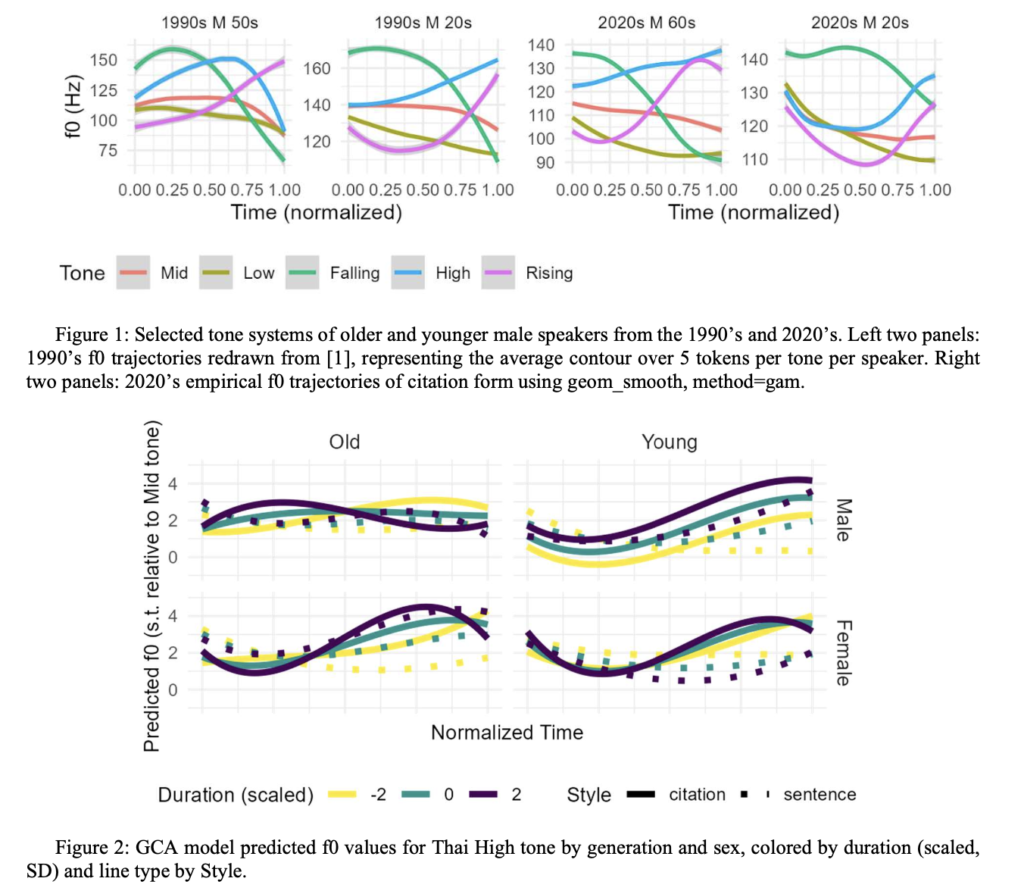We’re excited to share that researchers, students, and collaborators from ChulaSEAL (Center of Excellence in Southeast Asian Linguistics, Chulalongkorn University) took part in TAI 2025 (Tone and Intonation), held from May 16–18, 2025 in Herrsching am Ammersee, Germany and hosted by the Institute for Phonetics and Speech Processing at LMU Munich.
ChulaSEAL members presented three studies, all focusing on tone and register systems in Southeast Asian languages. Furthermore, they also collaborated in other two studies conducted by ChulaSEAL collaborators.
Going Beyond Average Contours in the Study of Tone Variation and Change: A Case Study from Thai Tone 4
Teerawee Sukanchanon (MA student) and Francesco Burroni (Collaborator)
Teerawee and Francesco presented a talk showing how tone variation can be studied using a set of data-driven methods. The High tone (Tone 4) of Bangkok Thai was used as a case study. Techniques like functional principal component analysis (FPCA) and dynamic time-warping hierarchical clustering were used to reveal patterns of variation in tone trajectories. Their findings show that while younger speakers tend to use a particular variant more often, the overall distribution of tone variants hasn’t drastically changed across generations. They also found that the length of the pitch trajectory plays an important role in tonal variation.
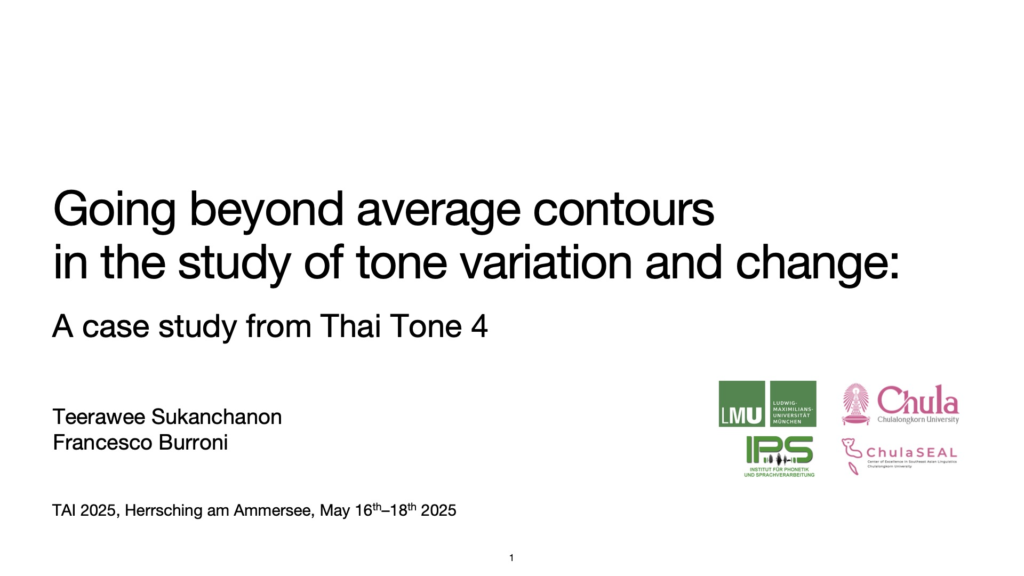
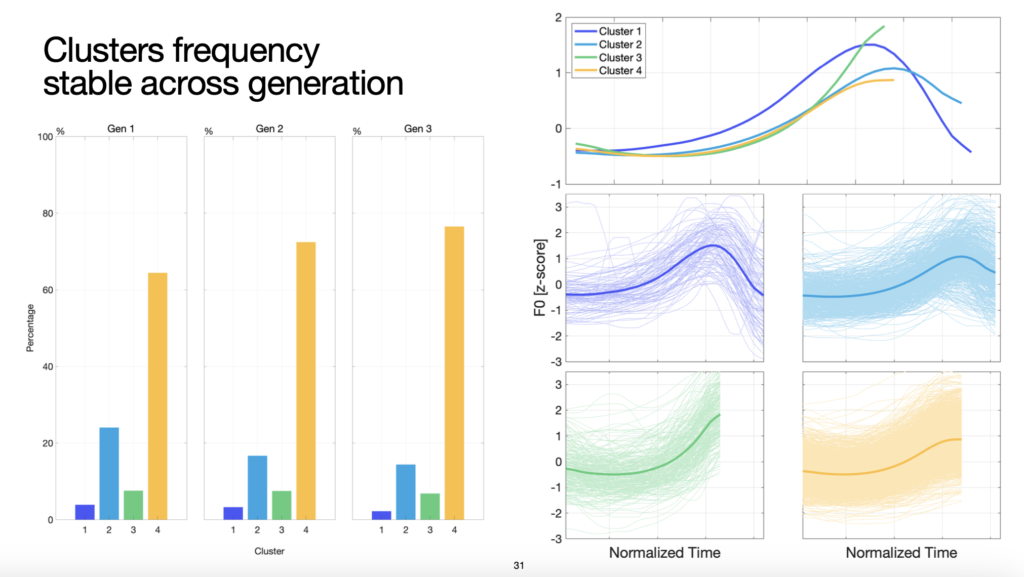
Phonologizing Pitch in Phnom Penh Khmer
Sothornin Mam (PhD student), Pittayawat Pittayaporn (Researcher), and Sireemas Maspong (Collaborator)
This poster examined how pitch differences in Phnom Penh Khmer (PPK) have developed into meaningful, contrastive features. The team focused on how a historical sound change (r > h) led to a new high vs. low pitch contrast—a distinction not found in Standard Khmer. Interestingly, this pitch difference isn’t limited to words with r > h onsets—it also appears in disyllabic words with voiced second syllables. This suggests that Phnom Penh Khmer is in the process of phonologizing pitch, turning it into a core part of the language’s sound system.
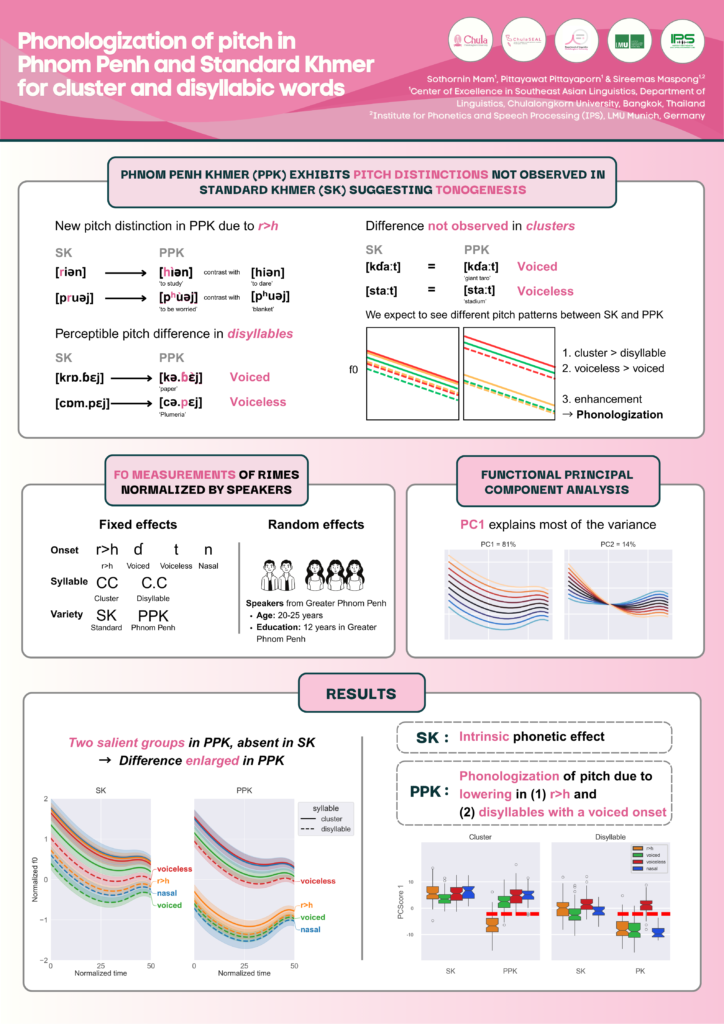
Vowel Mergers and Register Change in Chanthaburi Khmer
Pittayawat Pittayaporn (Researcher), Sireemas Maspong (Collaborator), and Sothornin Mam (PhD student)
In another poster, the team looked at how vowel and voice quality interact in Chanthaburi Khmer’s complex register system. They explored how certain vowel contrasts (i:-u: and e:-o:) are maintained through either vowel quality or voice quality, but not both. This suggests that as vowels merge, speakers rely more on other cues like voice quality to preserve distinctions. The study supports Hyman’s model of transphonologization, showing how features like register can emerge, disappear, and re-emerge over time. It also highlights that registrogenesis—the development of register systems—might be more complex and nonlinear than previously thought.

Vowel-intrinsic F0 interacts with tones: Evidence from a Thai speech corpus
Sireemas Maspong (Collaborator), Teerawee Sukanchanon (MA student) and Francesco Burroni (Collaborator)
They investigated the interactions of IF0 and tone using Thai as a case study. They analyzed whether vowel height, as a categorical variable (high vs. low vowels), correlates with vowel F0 across all tones. They also investigated whether F1, as a continuous measure of vowel height, correlates with F0 and whether this correlation varies by tone. Their findings support the hypothesis that IF0 exhibits a gradient effect by tone, both in categorical and continuous terms. However, unexpected patterns suggest that the gradient nature of IF0 is influenced by factors beyond raw F0 values of tones.
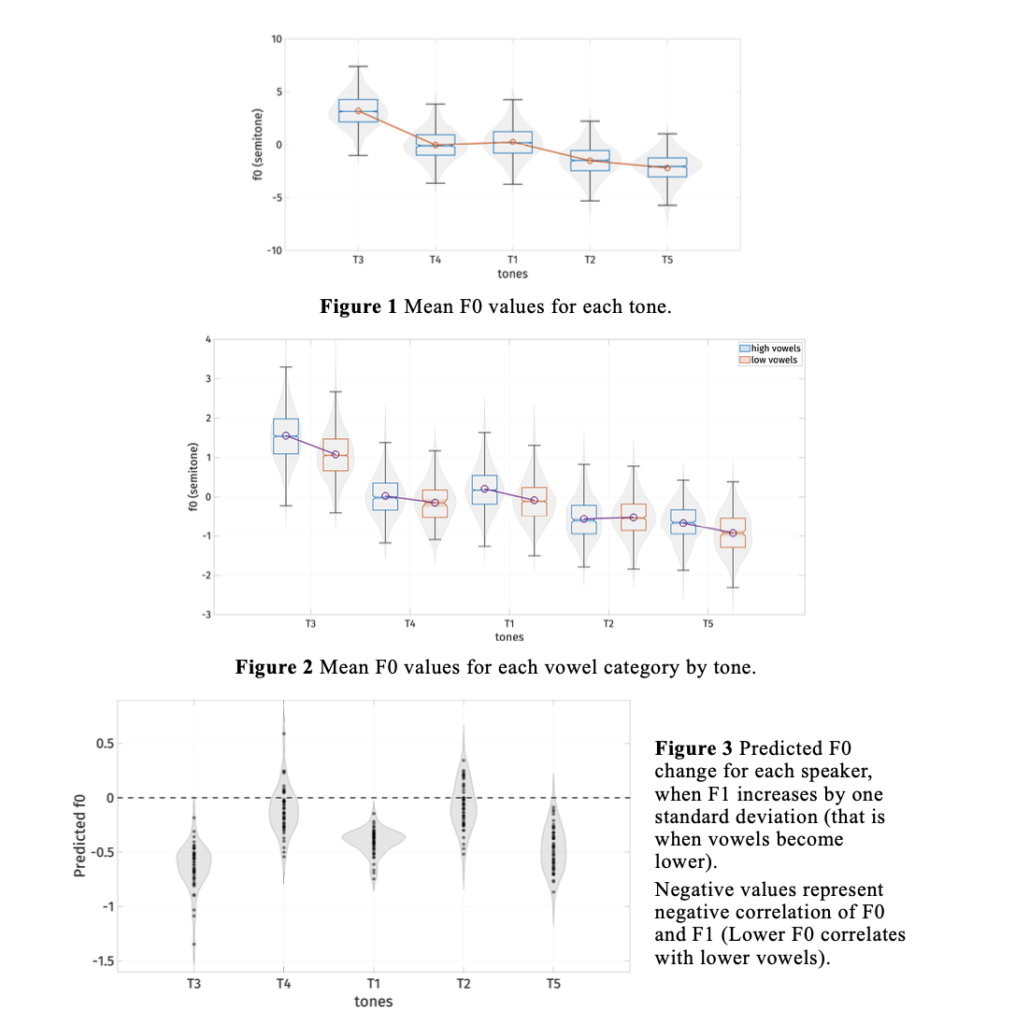
Variation and change in Bangkok Thai tonal contours: A comparison of data from the 1990’s and 2020’s
Cathryn Yang (Collaborator), Pittayawat Pittayaporn (Researcher) and James Kirby (Collaborator)
This study explores generational change in the Bangkok Thai High tone by comparing recordings collected 30 years apart, focusing on tonal contours in both citation forms and connected speech. Using data from 23 speakers (young and old), the authors analyze tonal shape variation through growth curve modeling. Results show that older male speakers tend to preserve a conservative domey rise-fall contour, while younger speakers—especially males—favor a scoopy rise with more positive curvature. However, this generational difference becomes less pronounced in connected speech. These findings point to an ongoing change in progress, with younger speakers shifting toward newer tonal variants, though it’s unclear whether the scoopy rise will ultimately replace more traditional forms.
